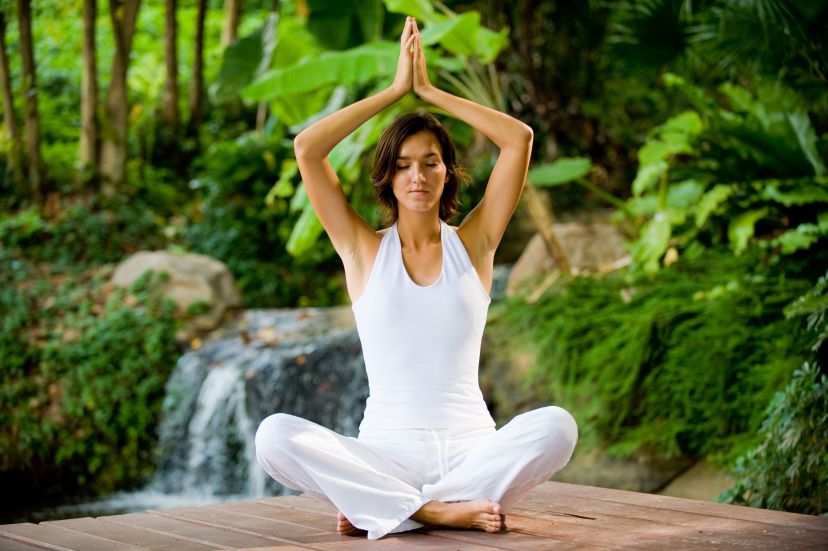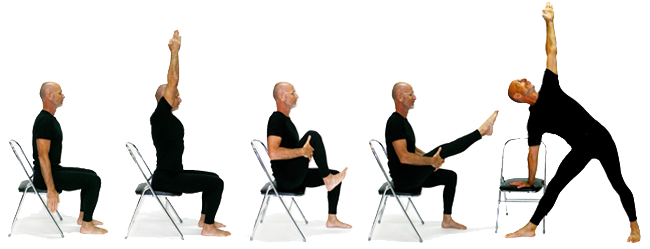
Posted by Live Yoga Life in Yoga article, Yoga Therapy on April 17th, 2016

We’ve all known for centuries (nay, millenia!) that yoga is as good for the soul as it is for the body. But until very recently, Western medicine dismissed this as sheer bunkum. As it didn’t involve chemical interventions, surgery, or rigorous moral reeducation, it was (in the minds of old-fashioned scientists) clearly not a valid form of treatment. However, the sheer weight of the evidence is beginning to make an impact. Modern, more open-minded scientists, are taking the potential of yoga to help soothe and heal troubled souls more seriously. They’ve made some significant finds, which are slowly leading to yoga’s acceptance by mainstream medicine in the field of mental health. It’s about time too. With the world’s mental health in the poor state in which it finds itself, we need all the help we can get! Here is what science has to say about yoga’s potential to aid your mental health:
Yoga Can Fight Addiction
When things get tough, far too many of us self-medicate with substances. Addictions are often related to other mental health issues, but they also cause considerable problems in their own right. It appears that yoga can help people both to fight the underlying causes of their addictions, and the addictions themselves. Yoga is increasingly being used by addiction therapists, who say that yoga helps addicts on a number of levels. It combats the sense of detachment from the body which is common among many addicts. It activates the parasympathetic nervous system (more on that later), which calms the stressors which can lead to cravings. It enables the recovering addict to develop a respect for and awareness of their body. And it ‘syncs’ body, mind, and soul powerfully – producing naturally the feeling of intrinsic ‘connectedness’ which many seek through substances.
Yoga Eliminates Stress
We all know anecdotally that yoga is relaxing. But do we know why? It’s all to do with the parasympathetic nervous system. Without getting too technical, two parts of your nervous system are responsible for the automatic processes of being wound up, and of being relaxed. Your sympathetic nervous system is responsible for putting you into ‘fight or flight’ mode, while your parasympathetic nervous system is responsible for the ‘rest and digest’ mode. ‘Fight or flighht’ mode is designed for short bursts of intense energy. It involves the diversion of resources from the organs to the muscles, and the release of chemicals which aggravate your mental state to provoke action. It’s only supposed to last for long enough to outrun or outfight a predator, but sadly, the sympathetic nervous system can’t distinguish between a predator and things like work-based stress. If you’re stressed, you’re in ‘fight or flight’ mode – which for many of us becomes unnaturally prolonged. This is very bad for us. What needs to happen in order for our bodies and our minds to relax is for the parasympathetic nervous system to be activated. This pulls your body back into the resting state at which it operates best. It re-routes resources to where they need to be, and gets the automatic processes like digestion back on track. Mood-levelling and enhancing chemicals are also released, which replace the aggravating cortisol and adrenaline released by the sympathetic nervous system. How can you make yourself switch from the sympathetic to the parasympathetic nervous system? You guessed it – yoga.
Yoga And The Vagus Nerve
Just as you can switch your body into ‘fight or flight’ mode using your mind (imagining terrible scenarios will do it, as will stressful and depressed ruminations!), so you can relax your mind using your body. When we do yoga, we consciously make our bodies mimic the physical symptoms of calm and peace. We regulate our breathing, we make slow, smooth movements. Our hearts tend to slow themselves in response to all of this. As we do all of this, we are signalling ‘calm’ to our vagus nerve. The vagus nerve is the largest nerve in the body. Its job is to report to the brain on the status of every major organ. When we do yoga, the vagus nerve notices the relaxed state of heart, lungs, and limbs. It relays this information to the brain – telling it to calm itself down because everything is clearly ok. This is why, as you do yoga, you seem to feel all of your worries dropping away. Freed from the intensities of the sympathetic nervous system, the brain allows itself to go into a deeper, calmer state of being which is much more pleasant, and much more mentally healthy than the alternative!
Post written by Anne Deal
Posted by Live Yoga Life in Beginners, Yogapedia on March 19th, 2016

Chair Yoga is a set of yoga poses which uses a chair. Why a chair? Everyone has a chair, yet not everyone can do a a full yoga class. Using a chair is a very useful prop as it provides stability and safety.
As well, anyone who has attended an Iyengar yoga class, which uses props, will realise how much deeper you can go into a yoga pose with the use of props.
For Liveyogalife.com, James Bryan from Knoff Yoga carefully crafted two sets of chair yoga classes: